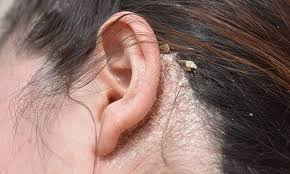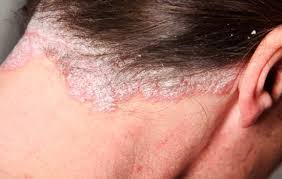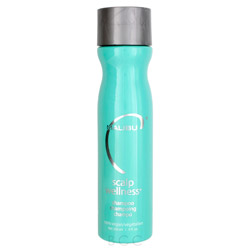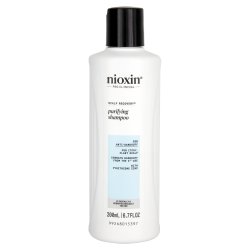Scalp Problems and what to do
Dandruff, put simply, is the hyper-production of skin cells often linked to P. Ovale Fungus. Skin cells are produced and shed too quickly which causes flakes of dead skin to fall off the scalp. Millions of people have this chronic disorder. The unmistakable symptoms of dandruff are white, oily-looking flakes of dead skin covering the hair and shoulders, and an itchy, scaly scalp. Dandruff can almost always be controlled, but dandruff treatment may take some trial and error. In general, daily cleansing with a gentle shampoo to reduce oiliness and skin cell buildup can often help mild dandruff. When regular shampoos fail, dandruff shampoos may succeed. But dandruff shampoos aren't all alike, and you may need to experiment until you find one that works for you. Pyrithione zinc shampoos. These contain the antibacterial and antifungal agent zinc pyrithione. This type of shampoo can reduce the fungus on your scalp that can cause dandruff and seborrheic dermatitis. Tar-based shampoos. Coal tar, a byproduct of the coal manufacturing process, helps conditions such as dandruff, seborrheic dermatitis and psoriasis. It slows how quickly skin cells on your scalp die and flake off. If you have light-colored hair, this type of shampoo may cause discoloration. Shampoos containing salicylic acid. These "scalp scrubs" help eliminate scale, but they may leave your scalp dry, leading to more flaking. Using a conditioner after shampooing can help relieve dryness. Selenium sulfide shampoos. These shampoos slow your skin cells from dying and may also reduce malassezia (a yeast fungus). Because they can discolor blond, gray or chemically colored hair, be sure to use them only as directed, and rinse well after shampooing. Ketoconazole shampoos. Ketoconazole is a broad-spectrum antifungal agent that may work when other shampoos fail. It's available over-the-counter as well as by prescription.

Oily Scalp
Oily scalp is a problematic condition that can lead to greasy hair, dandruff or a skin disorder known as seborrheic dermatitis. Excess oiliness, also known as seborrhea, is one of the most common scalp conditions. Oily scalp often results from an excess production of your skin' natural oils, or sebum. This can cause your hair and scalp to feel greasy or dirty, even if you've recently washed your hair. To treat oiliness the solution may be shampooing less. That may sound counterintuitive, but it works. That's because shampoo strips your hair of oil, and the more you use it, the more sebum your scalp produces in response. Also, avoid highly moisturizing hair products or leave-in conditioners and oils. All of the above not only make hair greasier, but they attract particles in the air, which weigh strands down and make them appear dirtier.

Seborrheic Dermatitis
Seborrheic dermatitis is a common, chronic inflammatory skin disorder, generally confined to areas where sebaceous (oil) glands are most prominent. The condition is not harmful or contagious, but it can be uncomfortable and unsightly. Although the cause is unknown, several contributing factors may play a role: abnormality of the oil glands and hair follicles, a yeast fungus with bacteria growing in the sebum, production of certain hormones, stress, change of seasons and fatigue. Seborrheic dermatitis may go away without treatment. Or you may need many repeated treatments before the symptoms go away. And they may return later. Daily cleansing with a gentle soap and shampoo can help reduce oiliness and dead skin buildup. Selenium sulfide shampoos can also help. If the problem persists you should see a doctor, especially if you suspect your skin is infected or if other steps you've taken have not worked.

Dry Scalp
Characterized by a tight feeling scalp and dry skin flakes falling from the scalp. The most common causes of dry scalp are climate, swimming pools, sun exposure, and harsh shampoos that dissolve the natural sebum on the scalp and remove moisture. Your first step should be to use a gentle hydrating shampoo and a hydrating leave-in conditioner. You can also try using a hydrating mask weekly until symptoms subside.

Psoriasis
Psoriasis is a chronic skin and scalp disease of scaling and inflammation. It occurs when skin cells quickly multiply below the surface of the skin and accumulate on the surface before they have a chance to mature. Usually, skin cell turnover takes about a month, but with psoriasis the process occurs in only a few days. Typical Psoriasis results in patches of thick red, inflamed skin covered with silvery scales referred to as plaques which usually itch and feel sore. Psoriasis is believed to be caused primarily by an immune system disorder, genetics, infections, stress, or medication. A dermatologist usually can diagnose psoriasis by reviewing your medical history and examining your skin, scalp and nails. Although it's typically not necessary, your doctor also may recommend a biopsy. For this procedure, a small sample of your skin is removed and examined under a microscope to rule out other skin disorders. If you have psoriasis, your dermatologist will talk with you about your treatment options. Psoriasis is a chronic condition, and, currently, there's no cure. But, treatment can reduce symptoms by stopping the skin cells from growing so quickly. Therapies also can be used to remove scaly patches and smooth your skin.


 write a review
write a review
